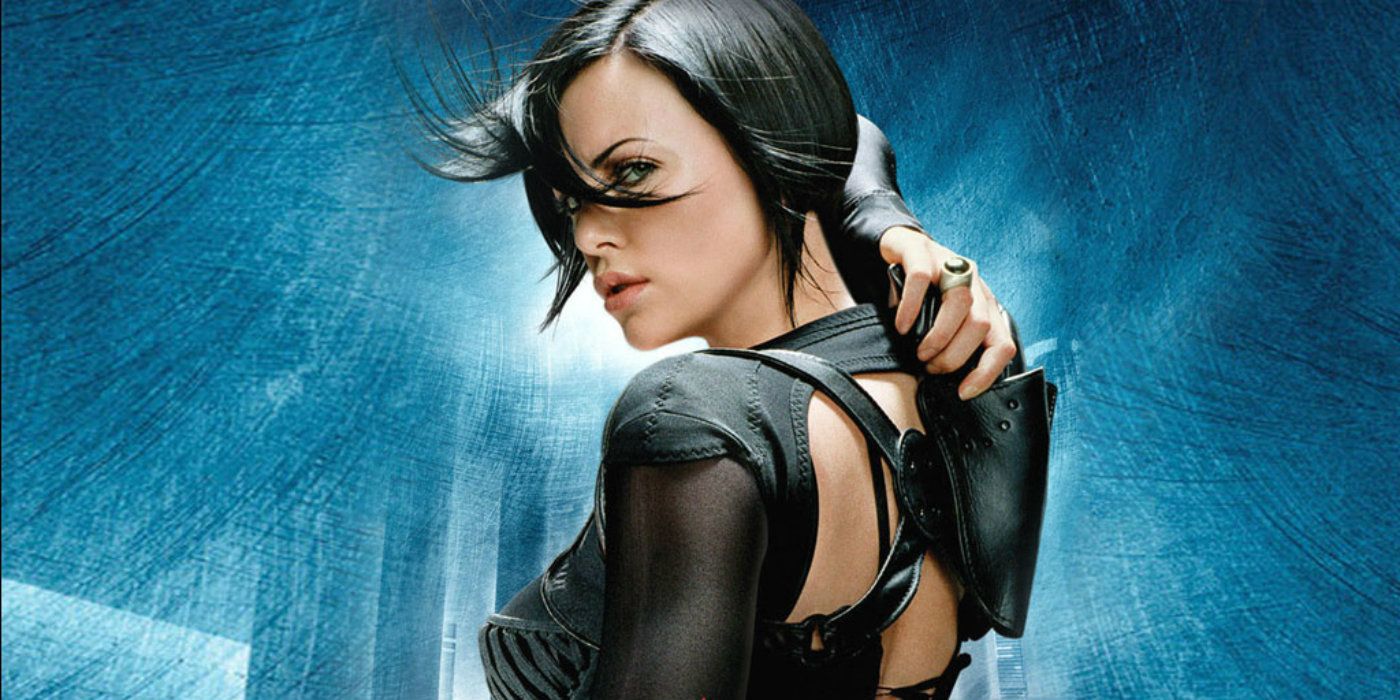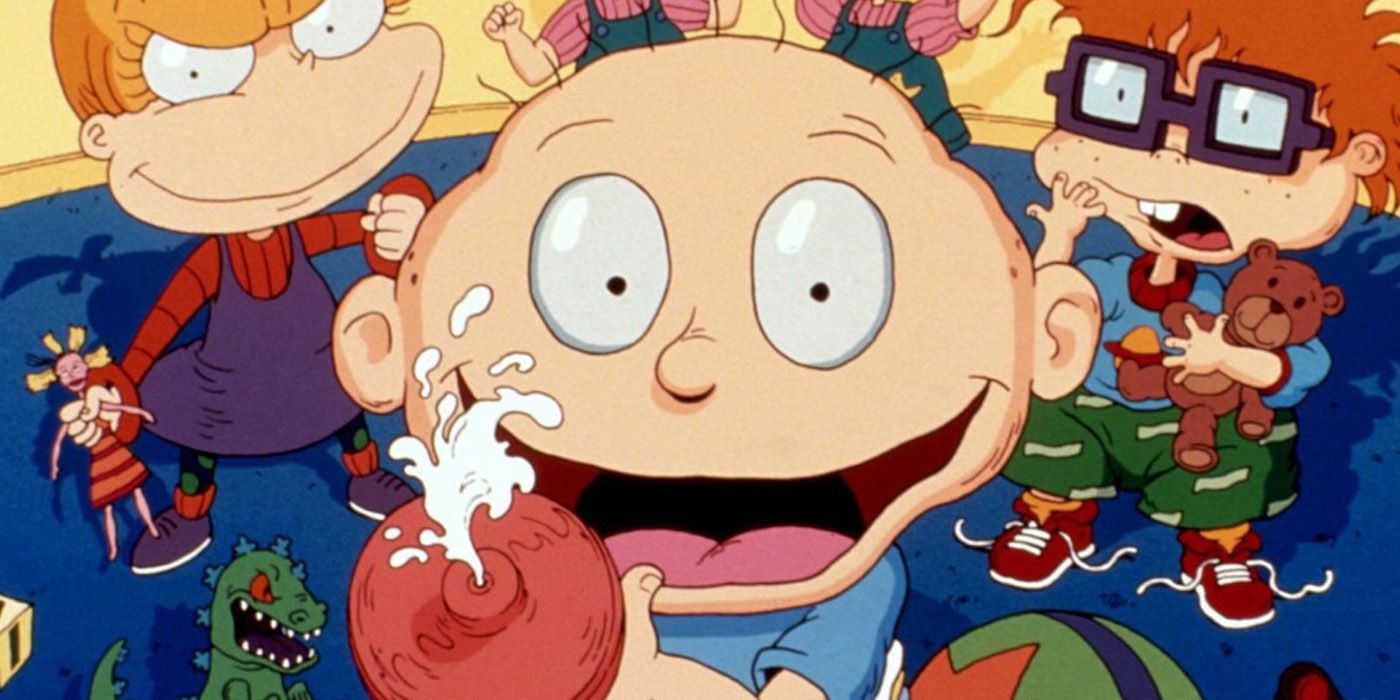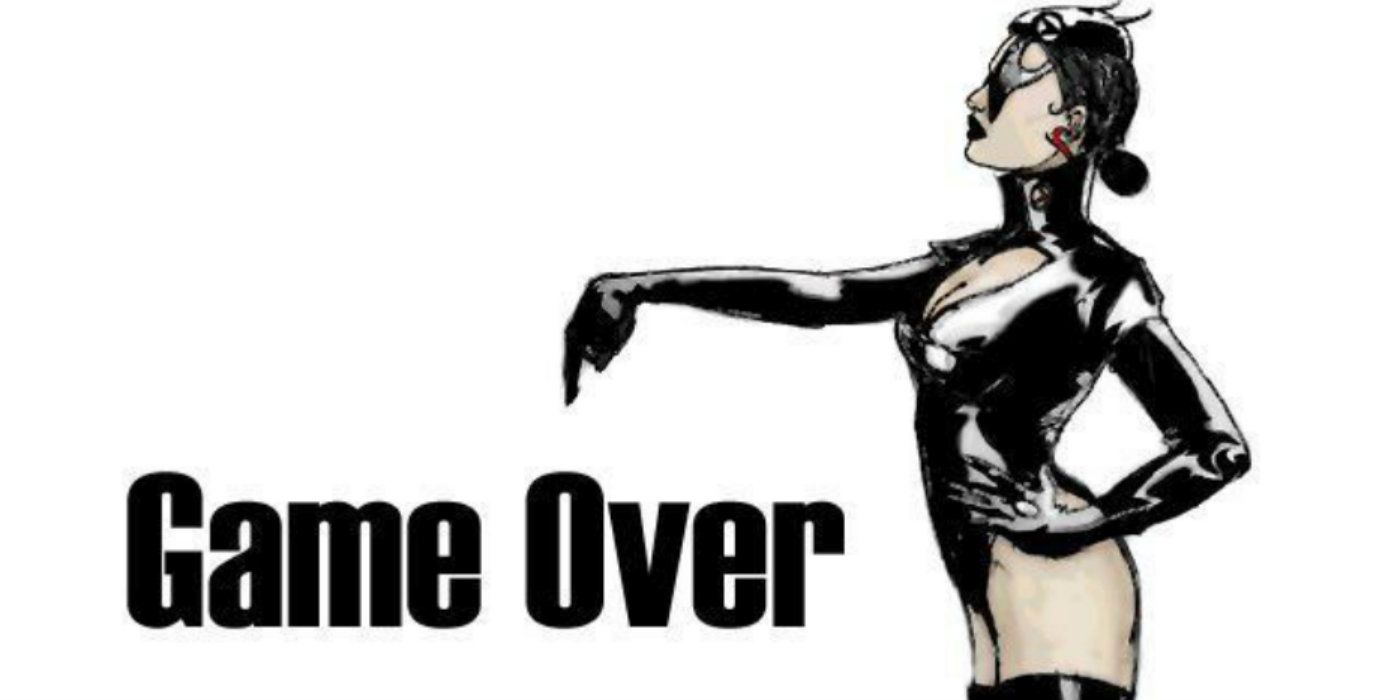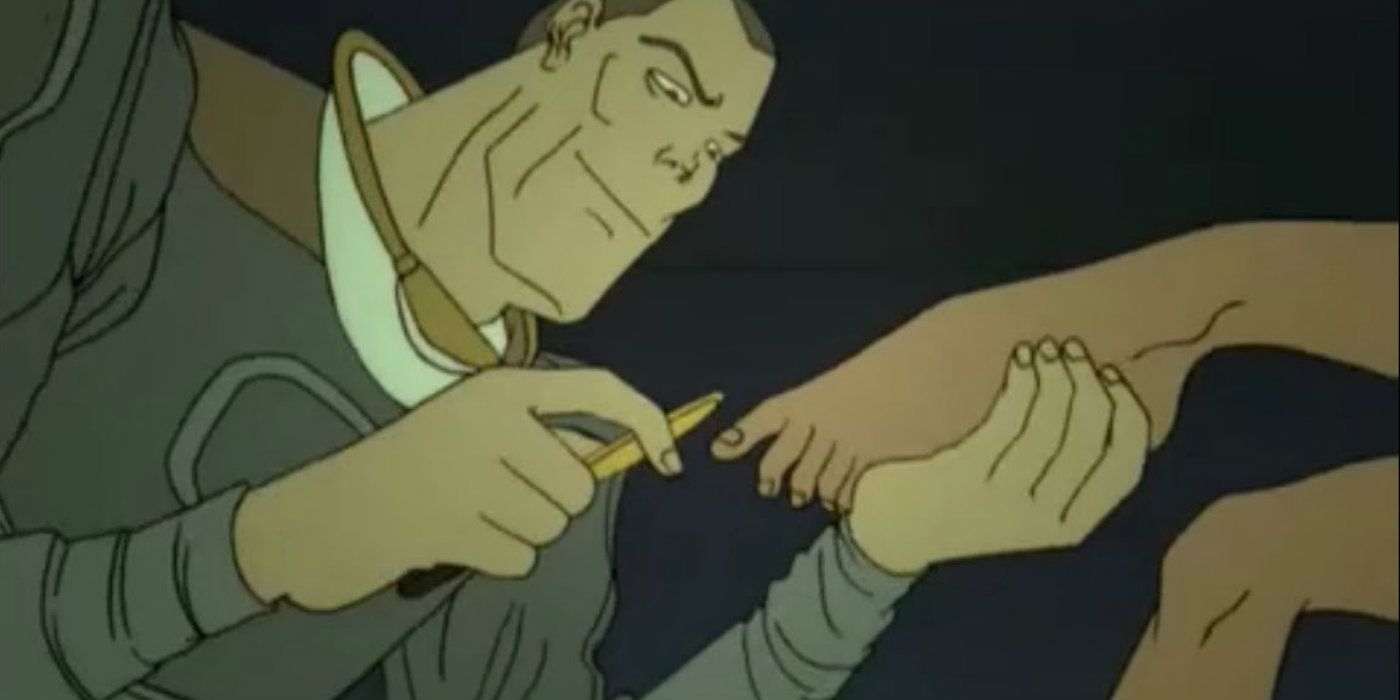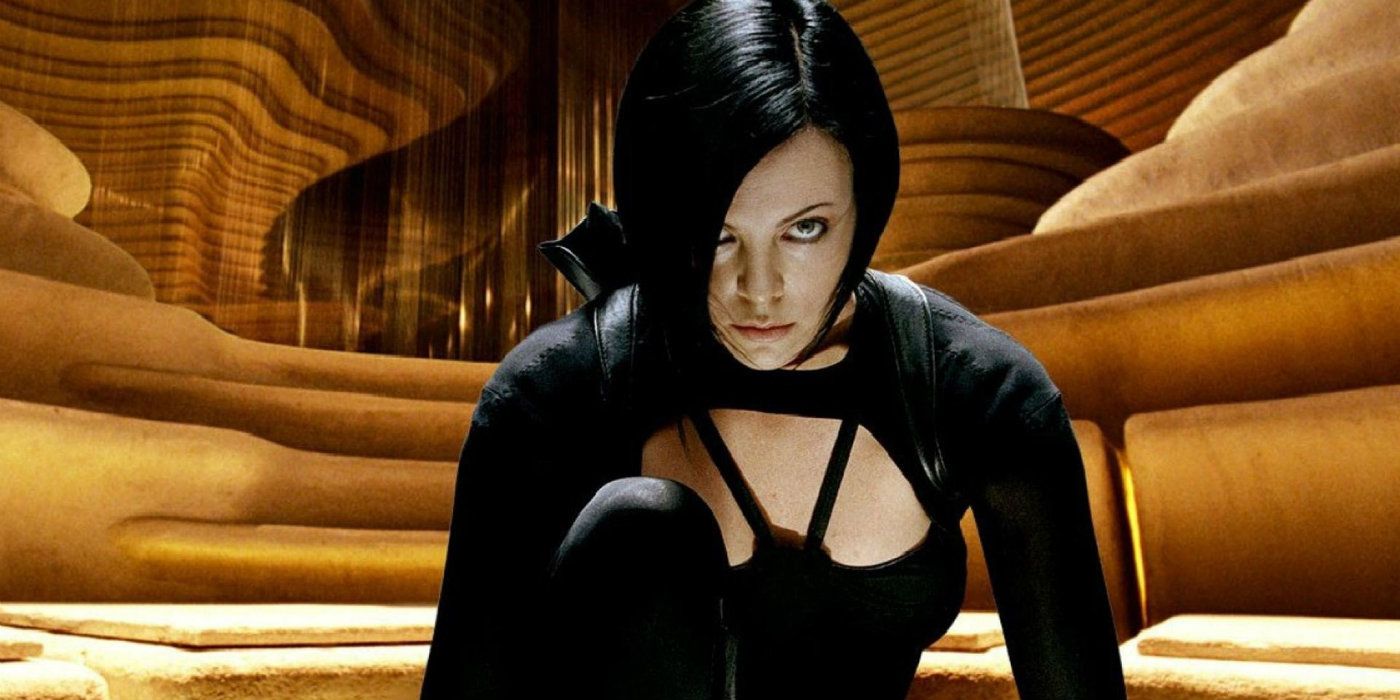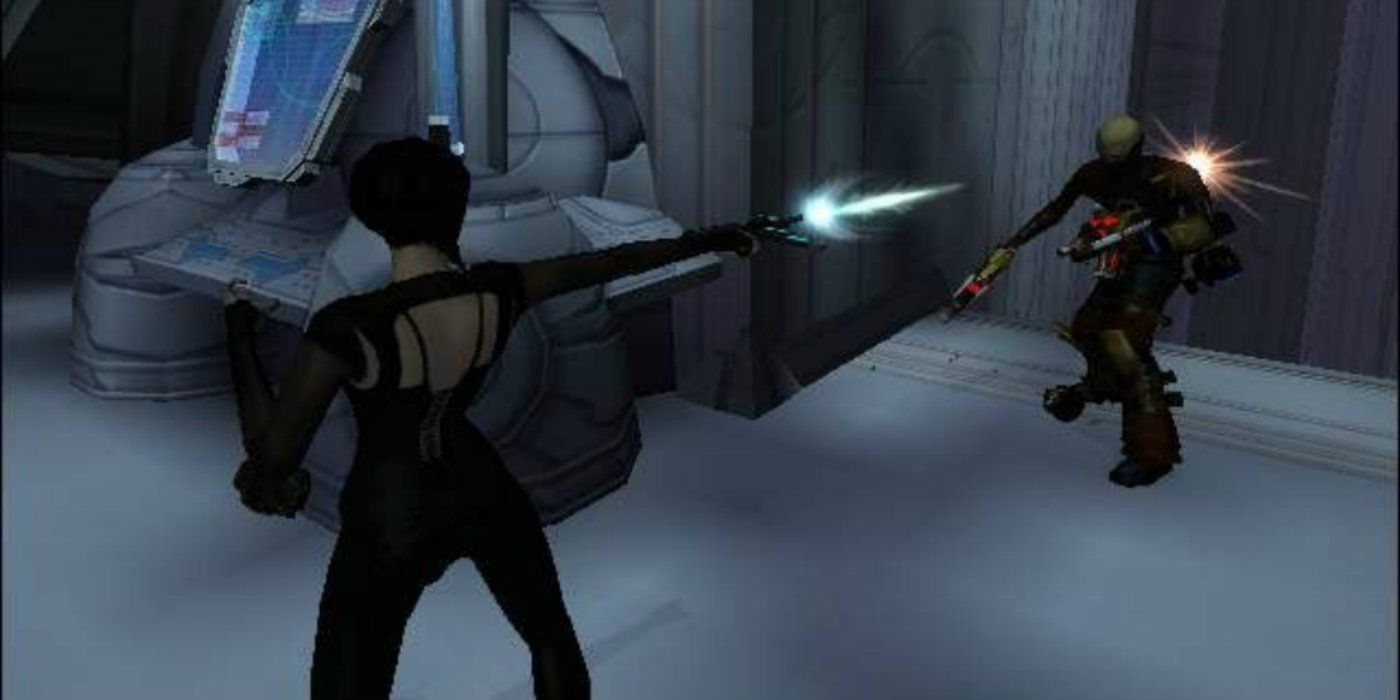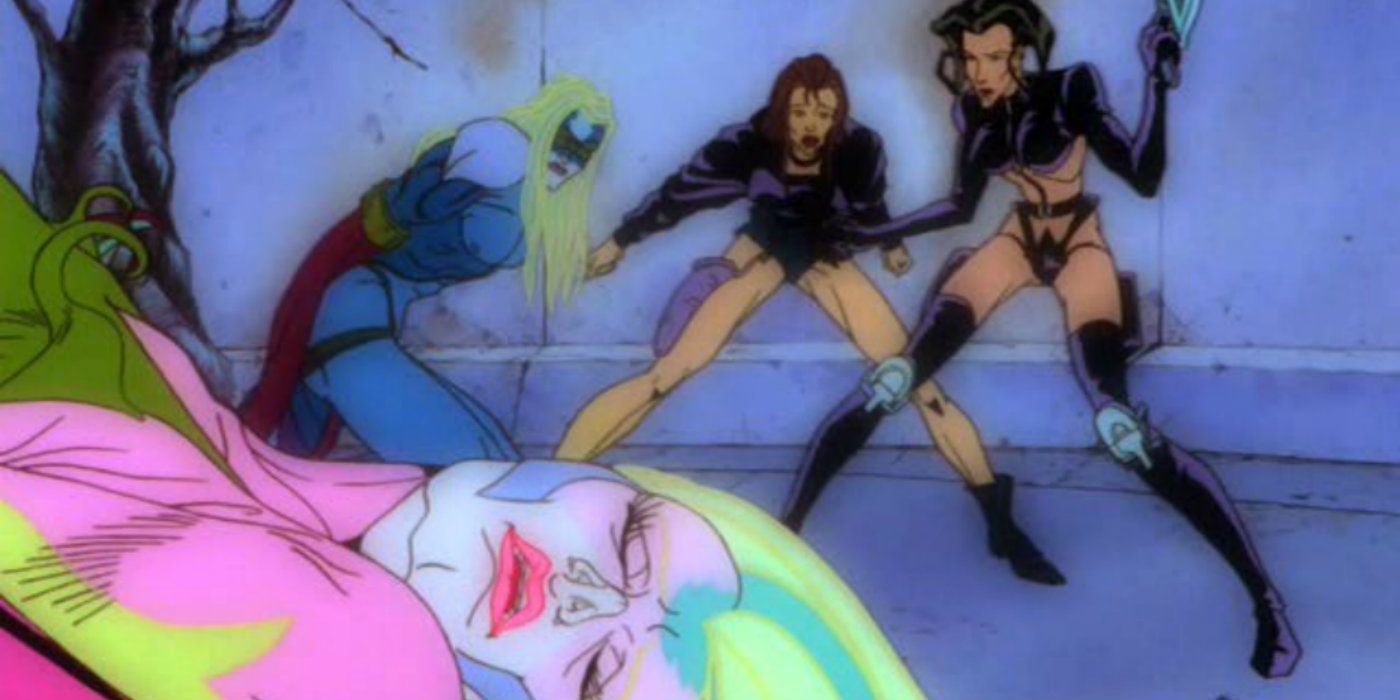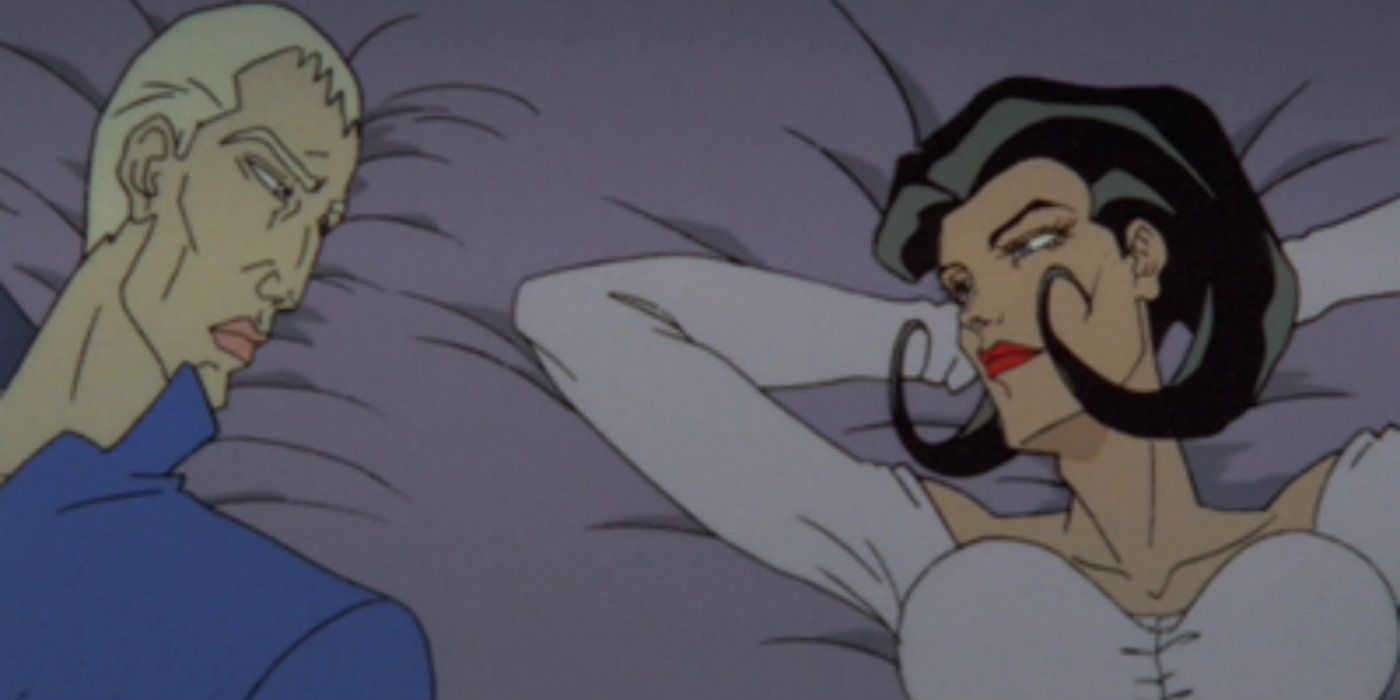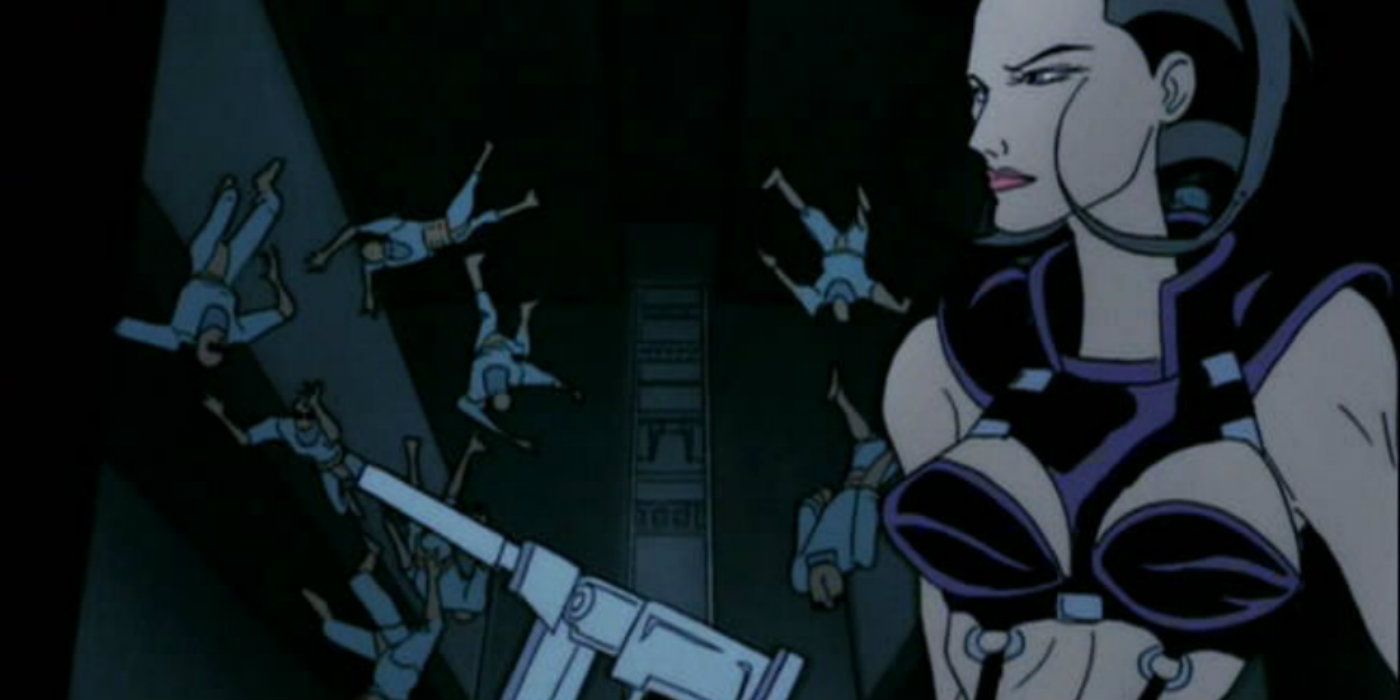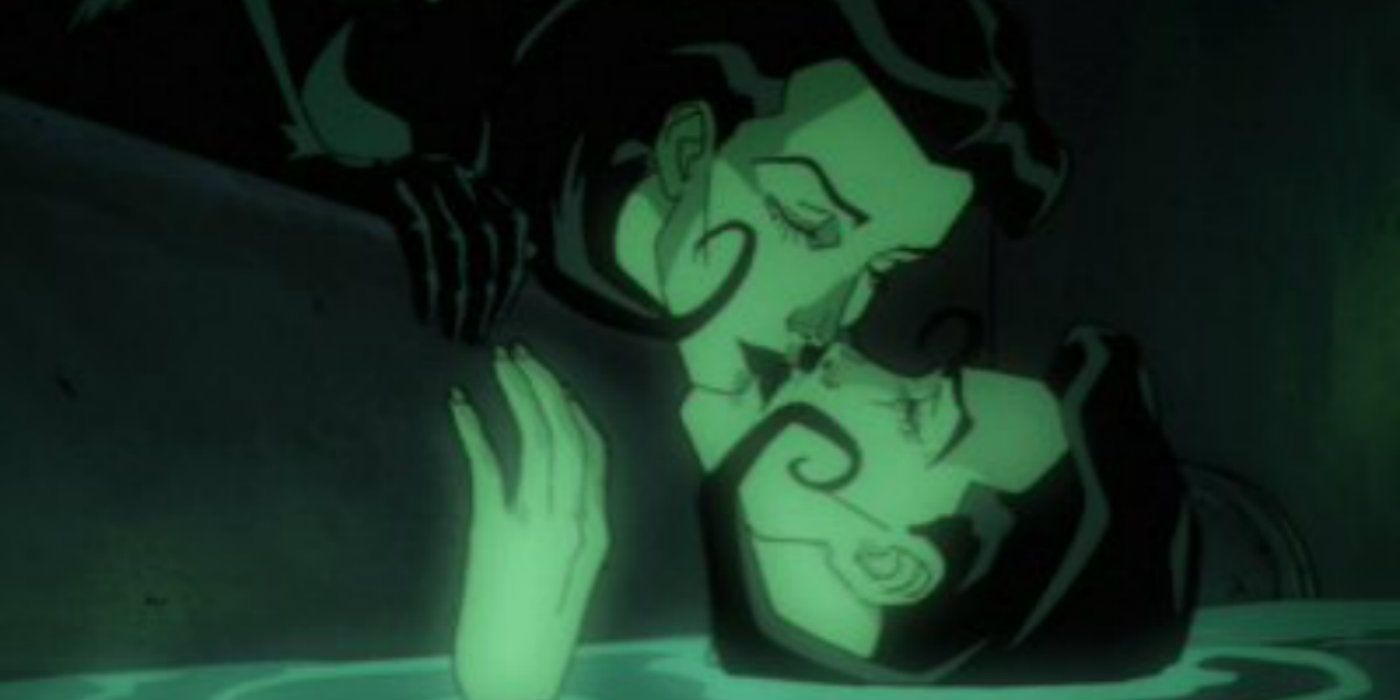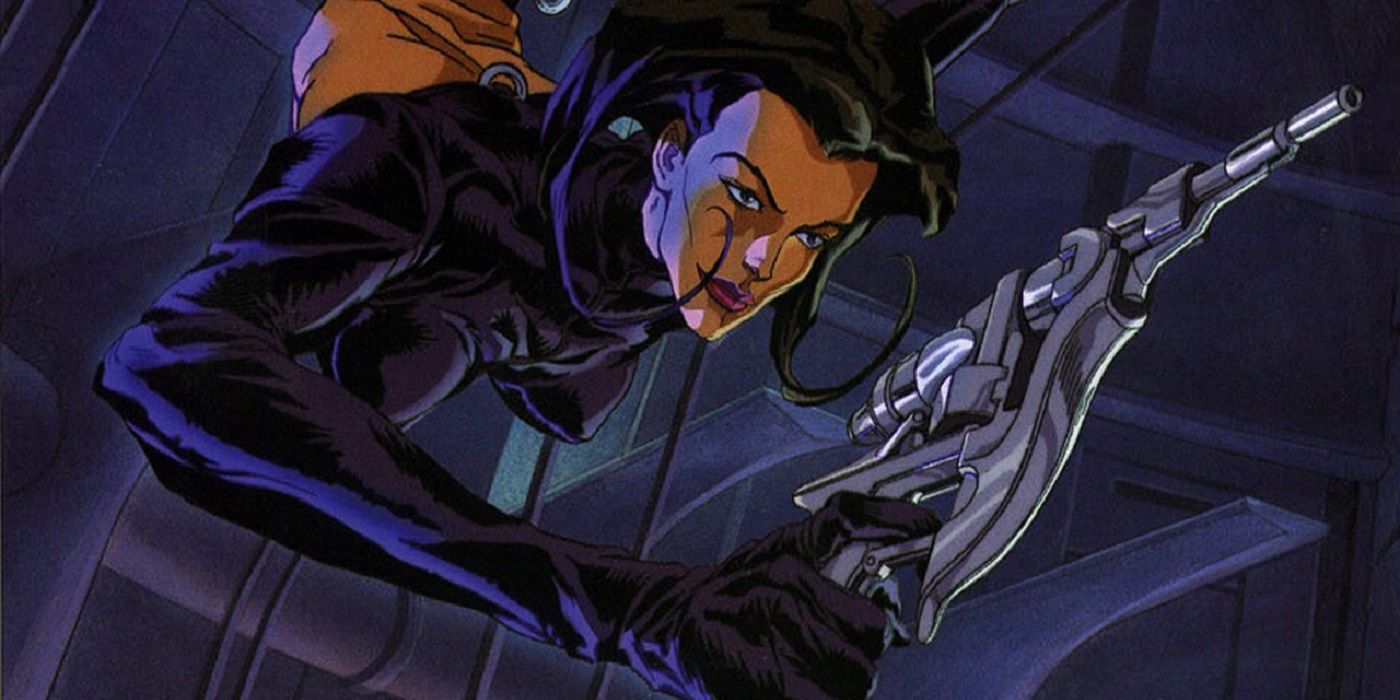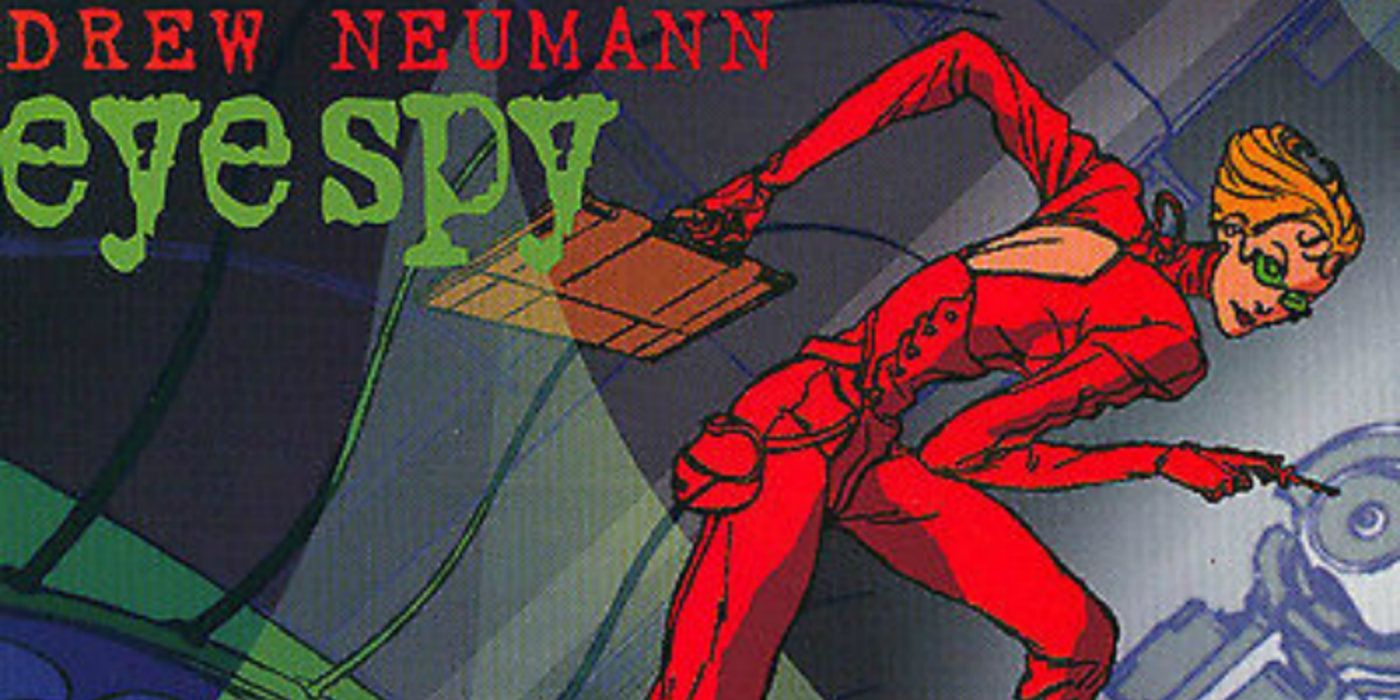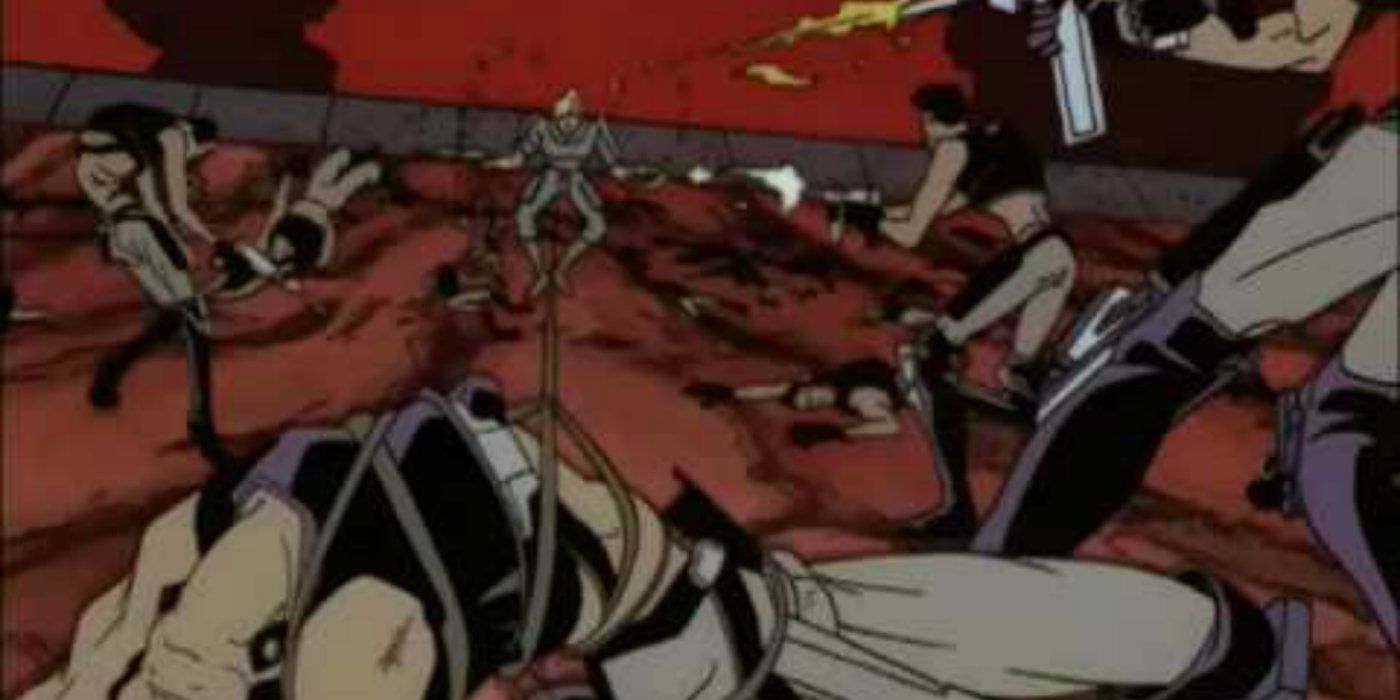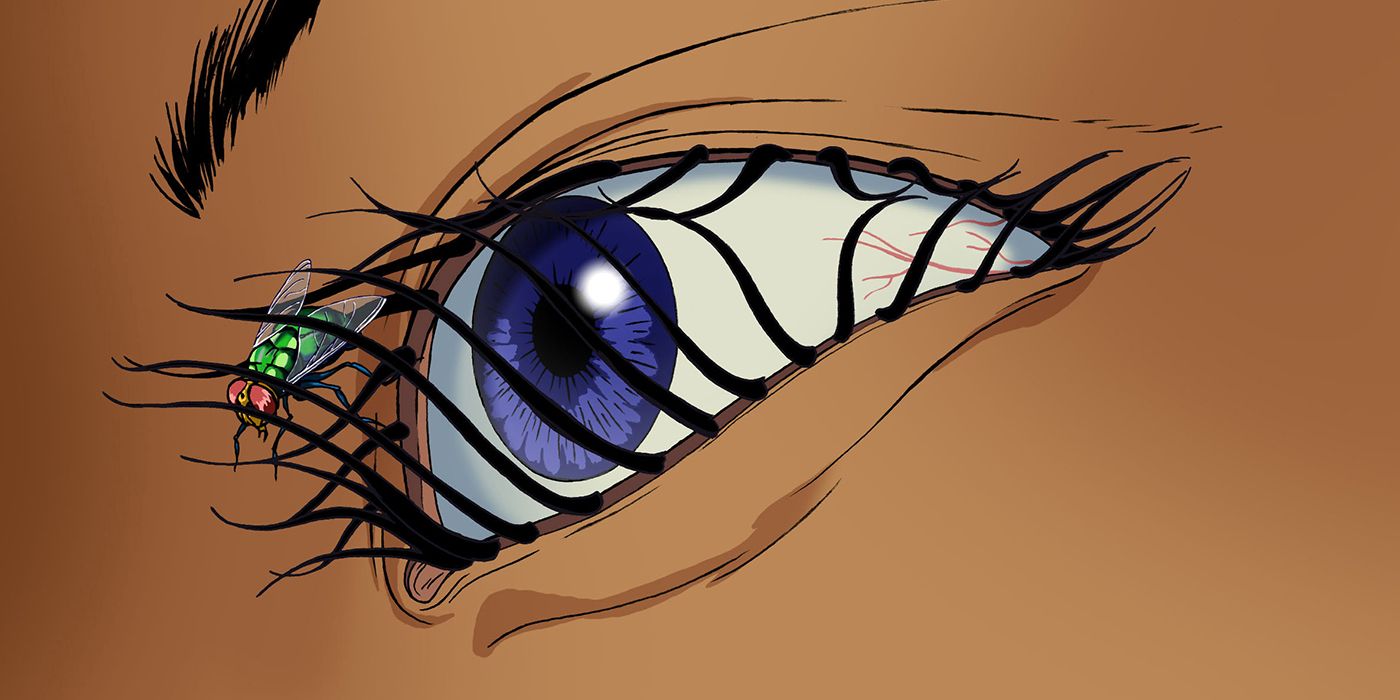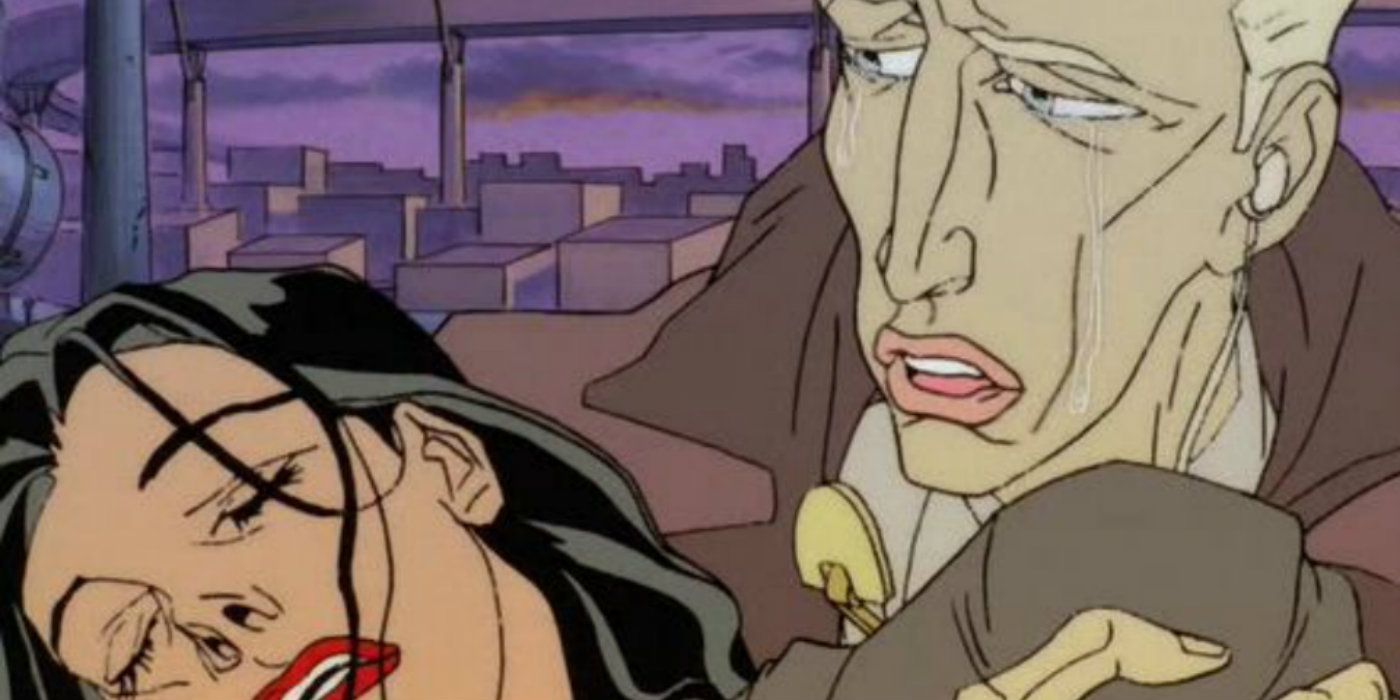In the early '90s, MTV ran a series called Liquid Television, a showcase for avant-garde animated short films. The biggest breakout from that show (besides those teenage morons named Beavis and Butt-Head) was animator Peter Chung's strange series of action shorts titled Aeon Flux.
Featuring bizarre, slightly unsettling animation set in an oppressive dystopian future, Aeon Flux starred the titular secret agent, who looked like a cross between an assassin and a dominatrix. In between freelance gigs, Aeon's primary, ongoing mission was to take down Trevor Goodchild-- that is, when she could manage to keep her tongue out of his mouth. The pair's complicated dynamic of simultaneously being enemies and lovers, shooting guns at each other one minute and ripping each other's clothes off the next, made Batman and Catwoman's relationship look like a functional storybook romance.
Aeon Flux eventually graduated from a series of Liquid Television shorts to its own half-hour series, a graphic novel, a four-issue comic book run, a video game, and a feature film. Here are 15 Things You Didn't Know about Aeon Flux.
15. Its creator also co-created Rugrats
Peter Chung had a pretty impressive resume prior to creating Aeon Flux, including storyboard artist on both the 1984 Transformers series and 1986 animated film, and art direction, character design, and opening title design on the first Teenage Mutant Ninja Turtles series. But in terms of truly original creations, Chung's biggest and most well-known pre-Aeon work was on the Nickelodeon series Rugrats. He not only directed the show's pilot, but he co-designed the main characters and helped establish the overall look of the show with Arlene Klasky and Gabor Csupo.
Despite the fact that Rugrats and Aeon Flux seem to have nothing in common besides Chung and their parent company-- both MTV and Nickelodeon are owned by Viacom-- Chung's time on Rugrats ended up having a huge impact on the creation of Aeon Flux. The animator found the baby and toddler characters to be too limiting in what they could do physically, and he wanted to create something with a much freer form of character animation. Thus, Aeon and company's dramatic, often extremely exaggerated style of movement was born.
14. Cindy Crawford starred as an Aeon-like character for a Diet Pepsi commercial
Aeon Flux was so popular in the mid-'90s that Pepsi commissioned Chung to create a Diet Pepsi commercial for them in the style of the show-- a Super Bowl commercial, no less. The spot starred legendary actor Malcolm McDowell playing a Trevor Goodchild-esque character, and Cindy Crawford-- one of the hottest supermodels in the world at that time-- playing an Aeon-esque character. After a brief live-action exchange between the pair, Crawford's face morphs into that of her animated counterpart, where she goes on an action-packed, very Aeon Flux-like adventure with some pretty obvious visual callbacks to the series, culminating in her scoring a coveted can of Diet Pepsi.
Unfortunately, the commercial ended up being pulled before it was aired during Super Bowl XXX, where it could've been seen by nearly 100 million people. However, MTV ended up acquiring the spot and aired it several times on their station, so it wasn't completely lost to time. The commercial was absent from the 2005 DVD collection, currently the most complete Aeon Flux collection available, but it is easy to find and watch online.
13. There were two failed attempts to create an Aeon Flux game before one was finally finished
In 1996, it was announced that now-defunct developer Cryo Interactive was creating a video game based on Aeon Flux. The project was so far along that magazines and websites had already begun running previews and screenshots for the game. However, publisher Viacom New Media ended up merging with Virgin Interactive during the game's development, the side effect of which was the cancelation of all unreleased Viacom games, including the Aeon game. Cryo decided to forge ahead with the game anyway, reworking it as a non-Aeon Flux game and releasing it in 1997 as Pax Corpus (pictured above), though obviously similarities to the original source material remained-- most notably, the outfit of the "new" main heroine.
A second Aeon Flux game was underway sometime around 2000 from developer The Collective-- also now defunct-- which had already handled other licensed games based on Indiana Jones, Star Trek, and Buffy, among several others. However, very little is known about this particular Aeon game, how far along it was, or why it was canceled.
Finally, in 2005, a game based on the Aeon Flux movie was finished and released by Terminal Reality-- although they, coincidentally, are also now out of business.
12. Aeon's "Day Job" is being a foot fetish model
While Aeon takes all manner of jobs that seem like they'd earn a freelance hitwoman/thief/saboteur a very comfortable living, she seems to largely act on her own, and for her own reasons. So if she doesn't have an employer, how does she make money? To be fair, one episode of the series showed us that her entire house was literally held in place by a single piece of tape, so it isn't as if she's living the extravagant life of a wealthy secret agent. But she still needs funds for all that weaponry, purple vinyl, and mega-hold hair product.
While Aeon's feet are presented in a sexual manner at several points throughout the show, there is one scene in particular that suggests she uses them for more than personal pleasure. Aeon is seen lying down in a room with a small peep hole for a viewer to watch her. A large man enters, and goes from filing her nails to licking her toes. The entire setup implies that Aeon has a career dealing in foot fetish voyeurism. The Herodotus File, a graphic novel published n 1995 that fleshes out more of the world and characters of Aeon Flux, confirms that Aeon is, in fact, a foot fetish model. This actually seems like a fairly tame source of income for her, to be honest.
11. The Aeon Flux movie was the victim of severe studio meddling
Following her critically-acclaimed debut 2000 film Girlfight, writer/director Karyn Kusama was hailed as one of Hollywood's newest directors to watch. She levied that respect into helming a big budget sci-fi action film for her second gig, which would become the live-action film adaptation of Aeon Flux. Kusama loved the script by Phil Hay and Matt Manfredi, and the trio set out to make something as weird and creatively challenging as the show itself, intending to avoid the easy Matrix ripoff route and aiming for a more artistic, Crouching Tiger, Hidden Dragon sensibility. The power of the concept was such that they were able to get Charlize Theron to star as Aeon hot off of her Oscar win.
And then, one of a director's worst nightmares came to pass: the studio head who had been championing the film as originally presented departed during the film's development, and the new boss wasn't as in love with their quirky vision. The movie was already finished shooting, but Kusama was taken off the project in order for a team of new studio-appointed editors to come in and hack the movie up into more of a formulaic Hollywood action movie, stripping out much of Kusama, Hay, and Manfredi's vision. The result was a film that flopped hard, both critically and commercially, and caused irreparable damage to the entire Aeon Flux brand.
10. The movie tie-in game was a bridge between the movie and the show
Anyone who has seen both the original animated series and the live-action Aeon Flux movie can attest that they seem to share only very basic brand connections. The 2005 video game that was released to coincide with the movie seems to be very specifically aimed at representing the Hollywood half of Aeon Flux, specifically due to Charlize Theron providing her likeness and voice for Aeon.
Interestingly, the game actually made a fair amount of references to the show rather than being a by-the-numbers movie-based game. Not only does the plot of the game stray from the film's, but the game's developers took things a step further by insinuating that the TV series and movie do, in fact, exist within the same canonical universe, and that the video game takes place during the supposed 1,000 year gap between the events at the end of the show and the beginning of the film.
While the attempts to link the show and movie are questionable, the game itself ended up being a surprisingly solid action game in its own right, playing like a sci-fi version of Bloodrayne-- which shares a developer and engine with the Aeon Flux game-- and containing clever nods to fellow sci-fi heroine-led franchise Metroid.
9. We almost got new episodes of the show in 2007
Peter Chung was known to be very accessible to Aeon Flux fans, often participating in online forums dedicated to the show. The most popular Aeon Flux online community was the LiveJournal-based "Monican Spies", and Chung would show up there to chat with fans and provide Aeon updates-- on the rare occasion that any updates were actually available.
In 2007, Aeon fans had plenty of reason to be optimistic when Chung confirmed to the Monican Spies community that he was in talks with MTV to create new animated episodes of the series. Strong sales of an Aeon Flux collection on DVD had seemingly convinced MTV to bring the show back, in much the same way that Fox put Family Guy back on the air after how well the show sold on DVD. While Chung provided no other information beyond that, all signs seemed to point to an official television revival of the show in the near future.
Unfortunately, nothing ever materialized from this brief glimmer of hope, and nothing new has been created from the Aeon Flux universe since the last issue of a comic book miniseries was released in January 2006.
8. The show snuck a fairly obvious sex scene past MTV censors
While it’s true that MTV let Aeon Flux get away with quite a bit - from literal rivers of blood to a main character who spent most of her time in lingerie-esque outfits, depicting two characters mid-coitus on TV in 1995 wasn’t typically done on basic cable -- at least not unless it was under covers, with soft focus, and with nothing but shots of faces and kissing. Aeon Flux would typically go for some thinly-veiled but easily excusable metaphors for sex, including the inflating and deflating of space suits and an oddly orgasmic back surgery.
In the episode “Thanatophobia,” the show depicted its mostly blatant on-screen sex scene. Two characters are on either side of a wall, with their bodies just so, and a strategically-placed hole allowing them to make physical contact with each other. Then, the man looks up, closes his eyes, grunts, and we see a quick shot of sperm swimming across the screen. It was hardly pornographic, but considering the year and the fact that the show aired in prime time, it was definitely a risque scene to sneak onto the air. Especially for a network that, only a few years earlier, was so afraid of sex-related controversy that they briefly banned the video for “Back Got Back.”
7. Only two words were spoken in the initial run of shorts
One of Peter Chung’s goals for creating Aeon Flux was to tell complex stories visually, without relying on dialogue. While the half-hour episodes were heavy on verbal exposition, the initial shorts were almost entirely free of any spoken dialogue; mostly just grunts, moans, and wails. To that end, Chung was successful, as even without dialogue each short told a complete and still very complex story.
There were, however, two times when the no-dialogue rule was broken prior to the show’s move to wordy half-hour episodes. The original pilot contains a scream of the word “No!” as its only bit of legitimate dialogue. Following this, the only other time that any character speaks a recognizable word, beyond nonsense dialogue heard coming from a television, is when Aeon whispers the word “plop” as she drops a creature's egg.
Following the (mostly) wordless nature of Aeon in those early shorts, Chung intentionally leaves us in suspense in the first half-hour episode, with Aeon spending nearly seven minutes going about her business silently before speaking her first-ever full line of dialogue, proclaiming, “My name is Aeon Flux. I’m here on a mission to assassinate Trevor Goodchild.” And with that, she is reintroduced to the world in her new, more verbose incarnation.
6. MTV Classic currently airs reruns of the show
MTV shed much of the “edge” that allowed it to have a show like Aeon Flux in the first place as it entered the latter part of the '90s, so reruns of it weren’t shown for very long after the series ended. Aeon Flux just didn’t have a place in between TRL, Room Raiders, and Loveline. Various channels in other countries picked up the show and aired it throughout the '90s and into the 2000s, but it largely remained absent from MTV networks until the company wanted to drum up enthusiasm for the upcoming movie. So in 2005, MTV UK began showing the half-hour episodes, with MTV Australia following shortly thereafter, but the series remained strangely absent from North American MTV channels.
The North American television absence of Aeon Flux would continue all the way to 2009, when the shorts were shown on MTV2. And then, finally in 2016, the half-hour Aeon Flux episodes began rerunning on MTV Classic, where they air to this day. You can also stream the entire run off of MTV’s website, but only if you log in with the information of your cable provider.
5. The show is often mistakenly labeled as anime
There is no question that Aeon Flux has a very unique art style, with very little that it can be compared to-- other than, of course, some of Peter Chung's later works. It certainly has very few peers among Western animation, which is perhaps why many people often refer to Aeon Flux as anime. Other reasons for the frequent mislabeling of the show are its hyper-sexual nature, the exaggerated motions of its characters, its focus on violent action, and the fact that its creator is of Asian descent.
For what it's worth, Peter Chung is Korean -- not that that's enough to preclude him from doing anime, since it doesn't strictly need to be created by Japanese animators to be considered as such. Defining anything as "anime" is often a difficult prospect, as the term began as simply being the Japanese word for animation and evolved into being a specific-- though still varied-- style of animation.
But with Aeon Flux being produced in the United States, by a production team consisting of Korean, European, and American animators, writers, and producers, and not having many of the more commonly-accepted tropes of the genre-- big eyes, a largely vibrant color palette, high-voiced females, a tendency towards younger characters, etc-- the show and its style has more elements that distinguish it from anime than anything.
4. A soundtrack was released under a different name
While the visual elements of Aeon Flux get most of the attention, much of what made the show unique was the music and sound design of Drew Neumann. While his credits also include scores for The Wild Thornberrys, The Grim Adventures of Billy and Mandy, and Aaahh!!! Real Monsters, his work on Aeon Flux remains his most acclaimed. He was also assisted on Aeon by Peter Stone, best known for his work in the industrial band Xorcist.
A soundtrack of Neumann's brilliant work was released on CD, but with a catch: they didn't get MTV's permission. The music was owned by Neumann and he still had the right to release it, but MTV owned Aeon Flux in and of itself. So the soundtrack couldn't make any mention or have any direct ties to the show. As such, it was titled Eye Spy: Ears Only Confidential, with a vaguely Aeon-esque woman in the cover. The liner notes refer to someone named "AF," and there is a track titled "Monican Jam," after the country that Aeon is from (Monica). Beyond that, the album didn't reference the show directly, and therefore was able to circumvent IP legalities and be sold by Neumann as an album.
3. Aeon wasn't meant to be the star
Despite the character of Aeon being the primary "protagonist" of the initial shorts, Peter Chung didn't intend for her to be the ongoing star of the show. While planning Aeon Flux's move to a half-hour series, Chung intended the show to have a rotating cast of main characters, similar to the short entitled "War", which sees the hero change several times as the scene goes on; each one being killed by the person who then becomes the next focal character. Aeon dying over and over again during the run of the shorts was Chung demonstrating the character's temporary role in the universe he was building.
In one of history's better examples of studio notes working out for the best, MTV wasn't a fan of Chung's plan, and pushed for the Aeon character to be the main character of the show going forward. He relented, and began to build the show around Aeon as the main character and her constant battle against-- and relationship with-- Trevor Goodchild.
2. Aeon Flux was originally just the name of the show, not the character
Further proof that Chung wasn't getting attached to the feisty, curly-haired terror agent who fronted most of the Aeon Flux shorts, he later admitted that Aeon Flux was just the name of the show, and that the woman didn't have a name. It's hard to name any characters in a world where nobody speaks, but Chung had already begun naming characters like Trevor Goodchild and others who he planned to play a major role in that world long-term. The woman wasn't such a character at that point, so there was no need to give her a name.
After spending many months of Chung and his staffers saying the name "Aeon Flux" out loud as they worked on the show, and then frequently shortening it to "Aeon," it just started to sound more and more like a character's name. Once the decision was made to keep the assassin-not-yet-known-as-Aeon as a permanent fixture in the world, it was easy to pick her name.
1. Aeon only officially dies once during the half-hour episodes
One of the most intriguing things about the Aeon Flux shorts was that its main character died over and over again, and even more interesting is the nature of those deaths. Sometimes she would go out in a blaze of action hero glory, but other times, she'd die due to some careless mistake, such as when she steps on a nail that causes her to fall off a building.
As the show was becoming a more traditional series, many fans wondered how the creators were going to handle the fickle nature of Aeon's mortality. Would she be allowed to die and inexplicably return again the next episode, or would there be continuity and permanent death? A quick run-through of those ten half-hour episodes seems to suggest the former, as there are several instances of what seem to be Aeon's demise, only to have her return in another episode.
Digging deeper, however, she only actually dies one time, when she clones herself and allows her original self to be killed in an effort to hurt Trevor. One of her supposed deaths actually just sees her in suspended animation in a strange substance, and another is an episode where an odd baby-like creature seems to "kill" her multiple times, but the events of that episode are ambiguous and never fully explained. It feels more like a Groundhog Day type of situation than Aeon continually dying and coming back to life.
---
Do you have any Aeon Flux trivia to share with us? Leave it in the comments!

